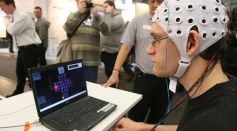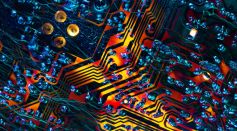TECH & INNOVATION
Skoltech Leads Open-Source Project Using Neural Networks to Generate Organic Molecule Nomenclature

Brain Technologies Unveils Groundbreaking 'Natural' Interface; Secures $50M Funding
Apollo Mission Photos Resurface in the Quest To Find Water on the Moon
Graphene-Diamond Junctions Mimic Human Perception, Memory; Leads Way for New Class of Computers

Undersea Robot Vehicles Used to Recover Remains of Air Force Navigator That's Been Missing Since 1967

How to Know If Your Cat is Happy? AI-Powered App Uses Camera to Tell a Feline's Mood
Miniature Particle Accelerator Powers Free-Electron Laser, Opening Possibilities for Smaller, Cheaper FEL Setups
Unique Brain Structures Might've Helped Ancient Birds Outlive Nonavian Dinosaurs
Quantum Error Computing Source Identified Thanks to Sydney University Machine Learning

Google's Quantum Computer Builds First-Ever Time Crystal: Are They Now Closer to Building a Time Machine?
Dental Calculus Plaque Remover Tool Kit: Is It Safe for Home Use?

Field Trip, Psychedelic Therapy Developer, Obtains Conditional NASDAQ Listing

Brain-Computer Interface Developer Announces Entry to Clinical Trials for Its Implants in the US; FDA Authorizes Test of Device in Human Patients

NTT PHI Lab Partners with IRCN to Develop Novel AI-Based Neuro-Computing Technology
Most Popular

V2G Technology: How EV Energy Storage Utilizes Smart Grid and Renewable Energy Integration

EV Fast Charging: How DC Fast Charge, Charging Speed, and Battery Wear Really Affect Your EV Battery Life

NASA Aurora Research Reveals How ESA Space Weather Teams Use Satellite Aurora Imaging and Ground Sensors

The Best JWST Images Ever Captured: James Webb Photos and NASA Space Imagery Ranked & Explained





